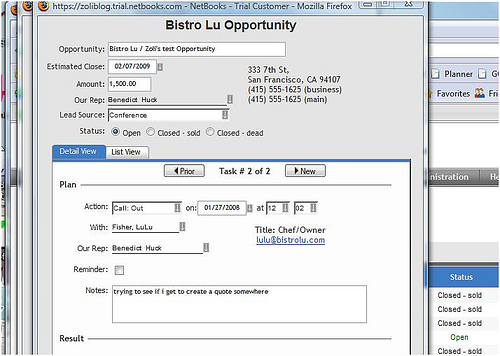OMG, this must be Recurring Themes Day.  Just done with the Your Blog is Your Resume theme (this one pops up about once a year with almost predictable regularity), and am now worried about Alexander Muse’s health. He’s a healthy strong man, but wants to shoot himself if he receives another NDA. He quotes Rick Segal (sorry, Rick for taking it verbatim, it’s just too entertaining…):
Just done with the Your Blog is Your Resume theme (this one pops up about once a year with almost predictable regularity), and am now worried about Alexander Muse’s health. He’s a healthy strong man, but wants to shoot himself if he receives another NDA. He quotes Rick Segal (sorry, Rick for taking it verbatim, it’s just too entertaining…):
VC firms typically do not sign NDAs for first looks/meetings.
VC firms typically do not sign NDAs with promises not to evaluate the same or similar businesses included.
VC firms typically do not sign NDAs with 5 year no contact clauses included.
VC firms typically do not sign NDAs with promises to report any contact with competitive businesses included.
Rick is a Canadian VC, and his firm has received 35 NDA’s so far this year. But here’s the best part from his post:
Repeat this 10 times before you go to bed tonight:
I will not send an unsolicited beautiful leather bound binder with 600 hundred pages of detailed business, marketing, competitive, and financial information about my business along with an unsigned NDA and a request for it to be signed and returned to any VC.
It arrived in my office on Thursday and the binder was off the charts nice.
Don’t ever do it. Really. Just send the nice leather binder without all the crap.  Unless you’ve discovered a new Conspiracy Theory (but you wouldn’t send that to a VC, would you?) don’t send hundreds of pages. Your page limit for first contact is one, perhaps two.
Unless you’ve discovered a new Conspiracy Theory (but you wouldn’t send that to a VC, would you?) don’t send hundreds of pages. Your page limit for first contact is one, perhaps two.
Back to the NDA theme, now that we’ve seen how VC’s hate them, let’s look at why startups shouldn’t bother about them anyway:
- As an Entrepreneur it is often in your interest to share WHAT you do, as a way to solicit feedback, concept validation
- If there is a “secret sauce” of HOW you will do it, you should not share it anyway, NDA or not – not until further down the road as part of due diligence with a committed investor
- Since it’s commonly known that investors do not sign NDA’s, asking for it is akin to displaying a banner: “Newbie Here”
These were originally Dharmesh Shah’s points, and my addition:
- If the information you reveal during the presentation is enough for a competitor to jeopardize your position, than you really don’t have anything substantial to justify an investment. Your time would be better spent on product development.
Finally, a side-note to Alex (and all): RFP’s are also a waste of time. Extraordinary effort on formalities, and most RFP’s are issued as CYA, to cover up the fact that the prospective Customer already has a preferred vendor / solution provider. If you’re in the public sector, there’s no way around them, otherwise avoid RFP’s – there’s always other business to go after.

 I don’t expect their 20th employee to be just as passionate as the Founders, but it can’t be a 9-5 type person either. At this stage they still need driven Team Members, not simply employees.
I don’t expect their 20th employee to be just as passionate as the Founders, but it can’t be a 9-5 type person either. At this stage they still need driven Team Members, not simply employees.

 I can’t help but wonder about the screen position though. For all I know, this is only for the guys’ entertainment, gals usually face the other way – is Box.net still an all-male team? And, without getting into the very material details, even we boys only perform one “operation” facing that way.., and that’s normally the quicker one. (?)
I can’t help but wonder about the screen position though. For all I know, this is only for the guys’ entertainment, gals usually face the other way – is Box.net still an all-male team? And, without getting into the very material details, even we boys only perform one “operation” facing that way.., and that’s normally the quicker one. (?)

 Thingamy could possibly be a handy tool for consultants, system integrator firms – but they all have their own army of programmers, toolsets..etc, which makes it an awfully hard sell, IMHO.
Thingamy could possibly be a handy tool for consultants, system integrator firms – but they all have their own army of programmers, toolsets..etc, which makes it an awfully hard sell, IMHO.



 TechMeme is great in threading together relevant posts, but is largely based (so I think…) on direct linking, so of course it could not auto-detect the ironic relationship between:
TechMeme is great in threading together relevant posts, but is largely based (so I think…) on direct linking, so of course it could not auto-detect the ironic relationship between:


 For all my love and support of SVASE, I sometimes complain that the monthly “Main Events” are a bit cut-and-dry. Well, that will certainly not be the case tomorrow: star-power, money, frugality are all well represented on the panel discussing
For all my love and support of SVASE, I sometimes complain that the monthly “Main Events” are a bit cut-and-dry. Well, that will certainly not be the case tomorrow: star-power, money, frugality are all well represented on the panel discussing  Matt Mullenweg
Matt Mullenweg
Recent Comments